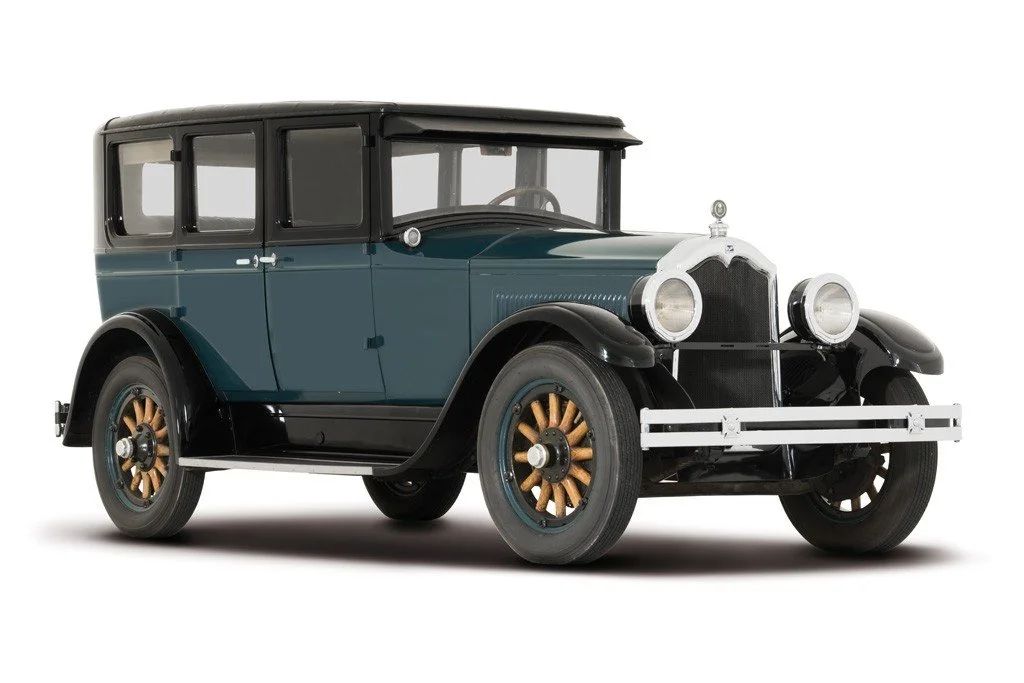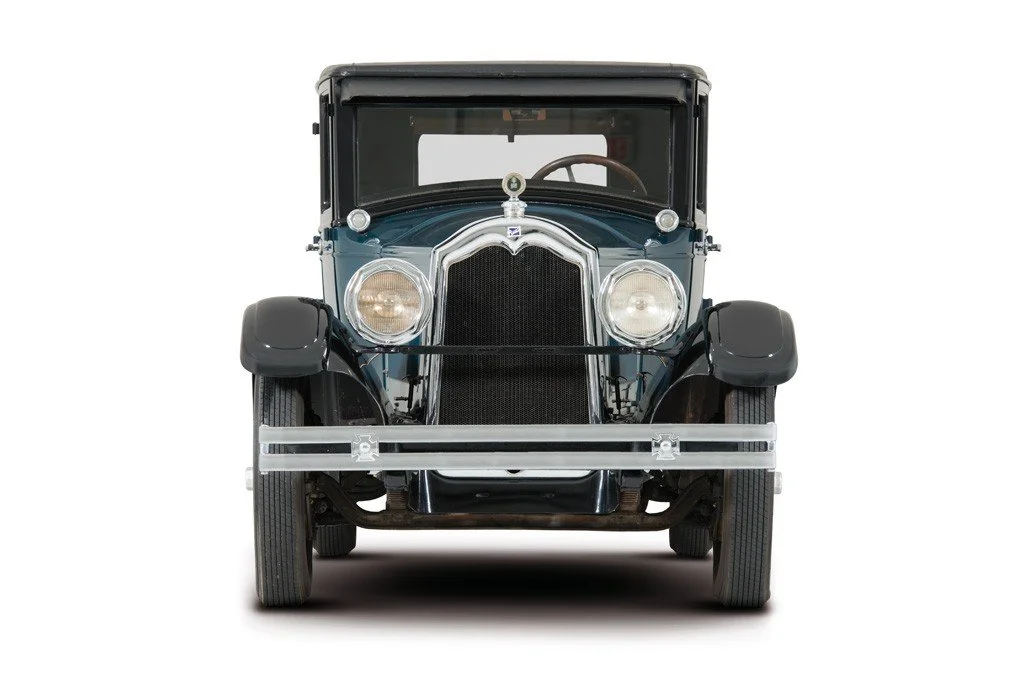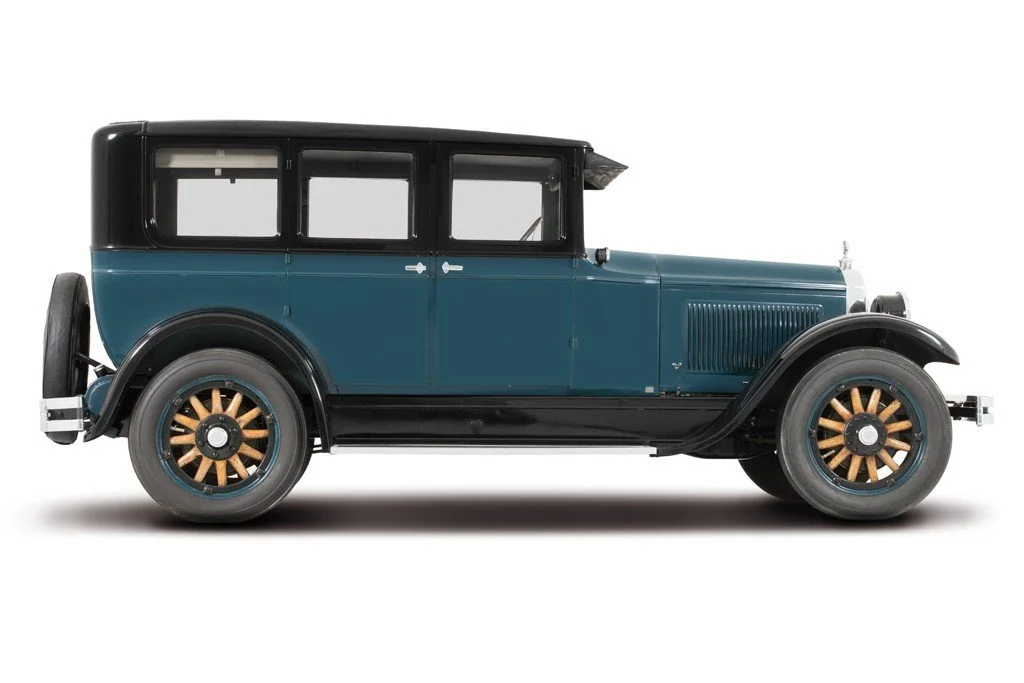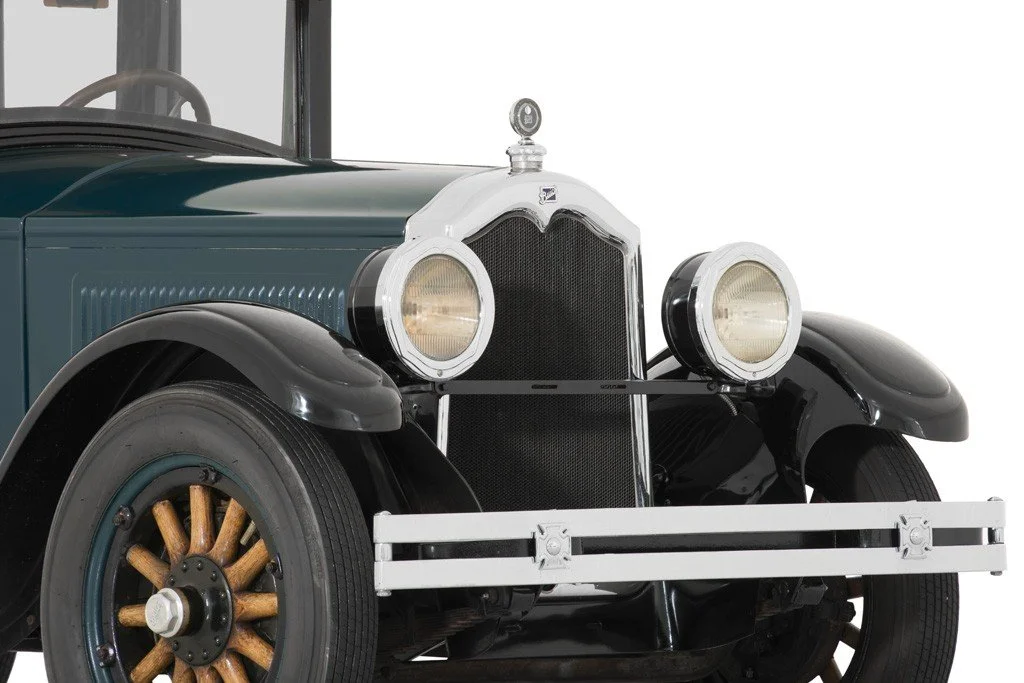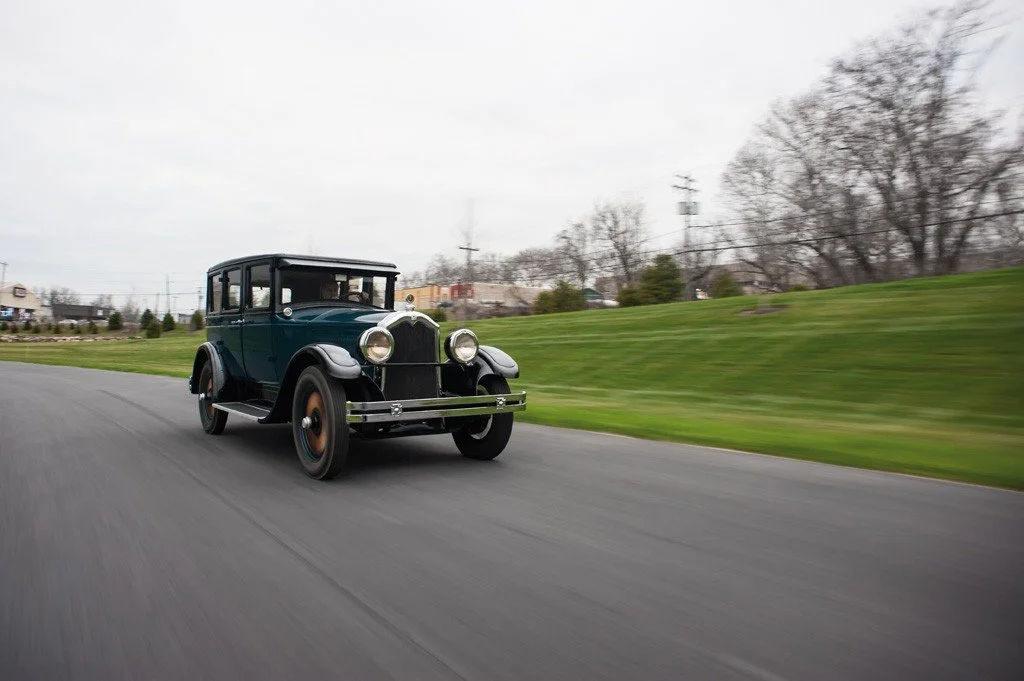-
This Buick Master Six Sedan was purchased new at Jack Jones Buick in Bethlehem, Pennsylvania. Actually, the car was purchased at Miller Buick, the predecessor to Jack Jones which opened in Bethlehem in 1921. Jack Jones took over and renamed the dealership in 1964.
The car was kept in the original owners family until 1981 when the Jones family purchased it and put it on display in the family dealership. When the dealership closed in 2005 after 84 years in business, the car was sold to the NB Center. The car was lightly restored to freshen its appearance.
The Master Six four door sedan model 47 with the 120 inch wheelbase was the highest production model in 1927, with almost 50,000 cars built in the Flint manufacturing plant.
-
Company
General MotorsWheelbase
120inInterior trim
Green clothBrakes
front and rear drumsMake
BuickLength
197.5inEngine
inline 6 - 274cidTires
33x6Model
Master Six - Model 47Width
74inCarburetor
1 Marvel T4Original Price
$1,495Body style
4-door SedanWeight
3750lbsHorsepower
75hp @ 2800rpmProduction
49,105Model year
1927Exterior paint
Dark Green / BlackTransmission
Non-synchro 3-speed manual -
The Buick product line for 1927 was slightly changed from 1926 with just minor cosmetic updates and some mechanical improvements to the base product line.
Cars were produced in two models; the Standard Six and the Master Six.
Both lines got rearranged dashboards with the speedometer now placed in front of the driver, while the Master series got dash mounted gas gauges for the first time. The Standard Six received some mechanical improvements to enhance smooth operation. The Master Six was given an upgrade to the hood ornament with the addition of small wings at the base called the Gothic Goddess radiator cap.
The Standard Six came on a 114.5 inch wheelbase chassis while the Master Six came in either a 120 inch or 128 inch wheelbase depending on the chosen body. There were a lot of bodies to choose from. The Standard Six offered 9 different bodies while the Master Six offered 11.
The Buick Motor Company reached an all time high production in 1926, enough to earn them 3rd in the industry after Ford and Chevrolet. The production volumes slid a little in 1927 placing Buick in 4th place in the production race.
The most produced of all body styles in 1927 was the model 47, five- passenger, four-door sedan. 49,105 were produced with 322 exported.
Buick celebrated a monumental occasion on November 1, 1927 when they produced their two-millionth car.

